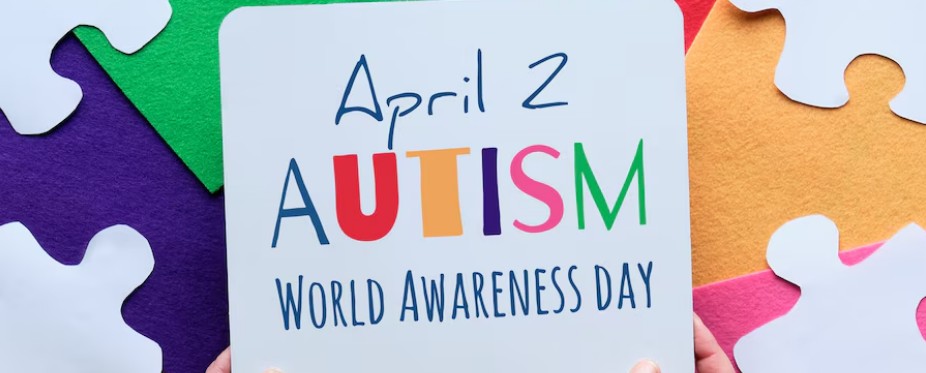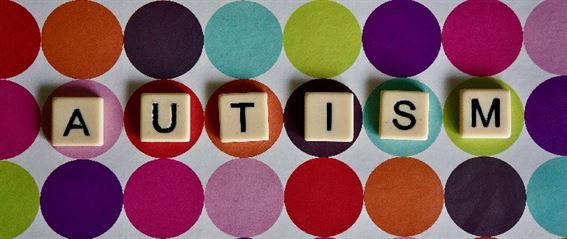
Understanding Autism

Understanding Autism
Autism Spectrum Disorder (ASD) is a complex neurodevelopmental condition that affects information processing in the brain. It impacts how individuals perceive the world, leading to differences in social interaction, communication, sensory processing, and behaviour. While often diagnosed in childhood, autism is a lifelong condition. However, with the right support and understanding, individuals on the spectrum can thrive and lead fulfilling lives.
Every year on April 2nd, the world comes together to recognize World Autism Awareness Day. This day serves as a global platform to raise awareness about Autism Spectrum Disorder (ASD), celebrate the strengths and talents of autistic individuals, and advocate for a more inclusive world.
The iconic symbol of World Autism Awareness Day is the colour blue. Buildings, landmarks, and homes around the world "Light It Up Blue" to show solidarity with the autistic community. This visual representation not only raises awareness but also serves as a powerful symbol of hope and acceptance.
What is Autism?
Autism isn't a single, clearly defined condition, but rather a spectrum of characteristics. People on the spectrum experience these characteristics to varying degrees. Some may have significant communication and social interaction challenges, while others may excel in specific areas and show subtle social differences.
Here are some core areas where individuals with autism may exhibit differences:
- Social Interaction: Difficulty with social cues, nonverbal communication, making friends, and understanding emotions in others.
- Communication: Speech delays, echolalia (repeating phrases), difficulty with sarcasm and figurative language, reliance on routines and scripts.
- Sensory Processing: Over- or under-sensitivity to certain sights, sounds, textures, tastes, and smells.
- Repetitive Behaviors: Stimming (repetitive movements like flapping hands), restricted interests, insistence on routines.
Signs & Symptoms of Autism:
The signs and symptoms of autism typically appear in early childhood, between 18 months and 3 years of age. However, some children may not exhibit noticeable difficulties until later. Here are some early warning signs to be aware of:
- Social Delays: Lack of eye contact, not responding to their name, preferring solitary play.
- Communication Delays: Speech delays, echolalia, difficulty expressing needs or wants.
- Repetitive Behaviors: Lining up toys in a specific way, repetitive movements like rocking or flapping hands.
- Sensory Sensitivities: Strong reactions to loud noises, bright lights, certain textures, or smells.
Types of Autism Spectrum Disorder
While autism is a spectrum, some classification systems categorise it into different subtypes. Here's a simplified overview of two common classifications:
- Severity-based:
- Level 1 (Requiring Support): This level indicates significant challenges in communication, social interaction, and behaviour that require extensive ongoing support.
- Level 2 (Requiring Substantial Support): Individuals in this level need substantial support in many areas of daily life but may develop some independent communication and social skills.
- Level 3 (Requiring Very Substantial Support): This level signifies very limited communication and social interaction skills, with a high degree of reliance on support for daily living.
- DSM-5 (Diagnostic and Statistical Manual) Classification:
- Social (Pragmatic) Communication Disorder: This focuses on challenges in using communication for social purposes.
- Restricted Interests and Repetitive Behaviors: This emphasizes the presence of repetitive patterns of behaviour and restricted interests.
Supporting Individuals with Autism
Early intervention and ongoing support are crucial for individuals on the spectrum. Here are some ways to create a supportive environment:
- Structure and Routines: Provide predictable routines and structure to help manage sensory sensitivities and anxieties.
- Visual Aids: Utilize visual schedules, pictures, and social stories to enhance communication and understanding.
- Positive Reinforcement: Focus on rewarding desired behaviours and offering positive feedback for progress, no matter how small.
- Sensory Integration Therapy: This therapy can help individuals with sensory processing difficulties.
- Speech and Language Therapy: This therapy can address communication challenges and improve social interaction skills.
- Social Skills Training: This training can equip individuals with strategies for initiating conversations, maintaining friendships, and navigating social situations.
- Building Confidence: Encourage participation in activities and interests to foster self-esteem and a sense of accomplishment.
Advocating for Change
While significant progress has been made in understanding and supporting autistic individuals, challenges remain. Many still face social stigma, lack of access to appropriate services, and difficulties in securing employment.
World Autism Awareness Day is a call to action. It's a day to push for greater inclusion, advocate for better resources and support for autistic individuals and their families, and challenge existing perceptions about autism.
By working together, we can create a world where autistic individuals have the opportunity to reach their full potential and live fulfilling lives. Let's Light It Up Blue and celebrate the diversity and strengths that the autistic community brings to our world.
Articles
Build your awareness and get inspired with our researched articles on how you can strengthen your well-being
Popular Topics
An OTP has been sent to the email address
provided.
Please check your Inbox and Spam folders.

What Would You Like to Speak with a Specialist About?
Mental Fitness Journey starts Now!
Chearful Connects you with Top-tier Qualified Wellness specialists for the Price of a cup of Coffee!

Next Steps
- A Client Team member will reach out to you to schedule a session with the most suitable specialist.
- You will receive an email with a 10% Discount Code* for your 1st session.
- We invite you to Explore the Platform & Sign Up today! *Upto a maximum of $10 discount on a session purchased




 1667 Read
1667 Read







